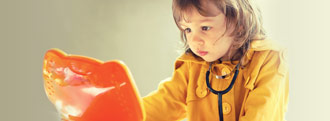Our Health Library information does not replace the advice of a doctor. Please be advised that this information is made available to assist our patients to learn more about their health. Our providers may not see and/or treat all topics found herein.
Rattlesnake Bite
Overview
Rattlesnakes are the most widely known of the pit vipers (family Viperidae). They are found throughout the United States and parts of Canada and account for most poisonous (venomous) snakebites in North America. They leave one, two, or three puncture marks on the skin, but you won't always see any marks.
Rattlesnakes can be up to 8 ft (2.5 m) long and have:
- Rattles at the end of the tail. Young snakes may only have one rattle or "button," which does not make the rattle sound.
- Diamond-shaped markings, blotches, or speckles down the back.
- Pitlike depressions behind the nostrils.
- A triangular head with slit-shaped pupils and fangs.
- A single row of plates or scales on the undersurface of the snake, including the tail.
Symptoms of a rattlesnake bite usually appear from minutes to hours after a bite and can include:
- Severe, immediate pain with rapid swelling.
- Bruising of the skin.
- Trouble breathing.
- Changes in heart rate or rhythm.
- A metallic, rubbery, or minty taste in the mouth.
- Numbness or tingling around the mouth, tongue, scalp, feet, or the bite area.
- Swelling in lymph nodes near the bite.
- Signs of shock.
If you think you have been bitten by a rattlesnake, call 911 or other emergency services immediately.
Credits
Current as of: October 1, 2025
Current as of: October 1, 2025






